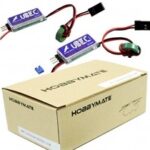The error code P0638, often encountered during OBDII/EOBD diagnostics, signifies a problem with the throttle actuator control range/performance, specifically in Bank 1. This article delves into the intricacies of this code, outlining its meaning, potential causes, symptoms, and diagnostic/repair procedures.
What Does the P0638 Code Mean?
Modern vehicles often utilize “drive-by-wire” systems, eliminating the direct mechanical link between the gas pedal and the throttle body. Instead, a sensor on the gas pedal relays information to the Powertrain Control Module (PCM) or Engine Control Module (ECM), which then commands an electric actuator motor within the throttle body to adjust the throttle plate. The PCM/ECM constantly monitors the throttle position sensor (TPS) to ensure the actual throttle blade position aligns with the desired position. When a discrepancy exists, exceeding the acceptable range, the P0638 code is triggered. While “Bank 1” typically refers to the side of the engine containing cylinder one, most vehicles employ a single throttle body serving all cylinders. This code shares similarities with the P0639 code. In many cases, the throttle body itself isn’t serviceable and requires replacement. A spring mechanism within the throttle body defaults to a partially open position during motor failure, allowing for limited low-speed driving. However, complete failure can render the throttle unresponsive.
Important Note: Prioritize addressing any diagnostic trouble codes related to the throttle position sensor before diagnosing the P0638 code.
Recognizing Symptoms of a P0638 Code
While the illumination of the Check Engine Light (Malfunction Indicator Lamp) is a primary indicator, a noticeable hesitation during acceleration can also signal a P0638 issue.
Potential Causes of the P0638 Code
Several factors can contribute to the P0638 code:
- Malfunctioning Pedal Position Sensor: This sensor, located on the gas pedal, communicates pedal position to the PCM/ECM.
- Faulty Throttle Position Sensor: This sensor, situated on the throttle body, relays the actual throttle blade position.
- Throttle Actuator Motor Malfunction: Issues with this motor can hinder proper throttle plate movement.
- Throttle Body Contamination: Dirt and grime buildup can restrict throttle blade movement.
- Wiring Harness Issues: Loose connections or damaged wiring within the harness can disrupt communication.
- PCM/ECM Malfunction: In rare cases, a faulty PCM/ECM can be the root cause.
Diagnosing and Repairing the P0638 Issue
1. Pedal Position Sensor Diagnosis:
- Voltage Checks: Using a Digital Volt Ohm Meter (DVOM), verify the 5-volt reference voltage, ground connection, and signal voltage at the sensor connector. The signal voltage should increase proportionally with pedal depression.
- Signal Continuity: Employ a graphing multimeter or oscilloscope to confirm a smooth, uninterrupted voltage increase throughout the pedal’s range of motion.
- Advanced Scan Tool: If available, compare the desired throttle input percentage with the actual pedal position.
2. Throttle Position Sensor Diagnosis:
- Voltage Checks: Similar to the pedal position sensor, check for proper voltage and ground at the TPS connector. The signal voltage should correspond to the throttle blade position.
- Signal Continuity: Utilize a graphing multimeter or oscilloscope to ensure a smooth voltage transition across the throttle’s range of motion.
- Advanced Scan Tool: Compare the actual throttle position percentage with the commanded position.
3. Throttle Actuator Motor Inspection:
- Resistance Check: Disconnect the motor harness and measure resistance using a DVOM. Compare the reading with factory specifications.
- Power and Signal Verification: Check for proper power supply and signal using a DVOM and a wiring diagram. Analyze the duty cycle with a graphing multimeter or oscilloscope, comparing it with the PCM/ECM’s commanded duty cycle.
4. Throttle Body Cleaning:
- Visual Inspection: Remove the throttle body and inspect for obstructions or dirt buildup around the throttle plate. Clean thoroughly if necessary.
5. PCM/ECM Testing:
- Data Monitoring: Use an advanced scan tool to monitor desired input, actual throttle position, and commanded motor position percentages. Discrepancies may indicate wiring issues.
- Wiring Resistance Check: With both sensor and PCM/ECM harnesses disconnected, check wiring resistance using a DVOM and a wiring diagram. Excessive resistance can lead to inaccurate readings and trigger the P0638 code.
Conclusion
Addressing the EOBD/OBDII error code P0638 requires a systematic approach involving a thorough inspection of the pedal position sensor, throttle position sensor, throttle actuator motor, throttle body, and related wiring. Utilizing appropriate diagnostic tools, such as a DVOM and potentially an advanced scan tool, is crucial for accurate diagnosis and effective repair. Remember to consult your vehicle’s specific repair manual for detailed procedures and specifications.

